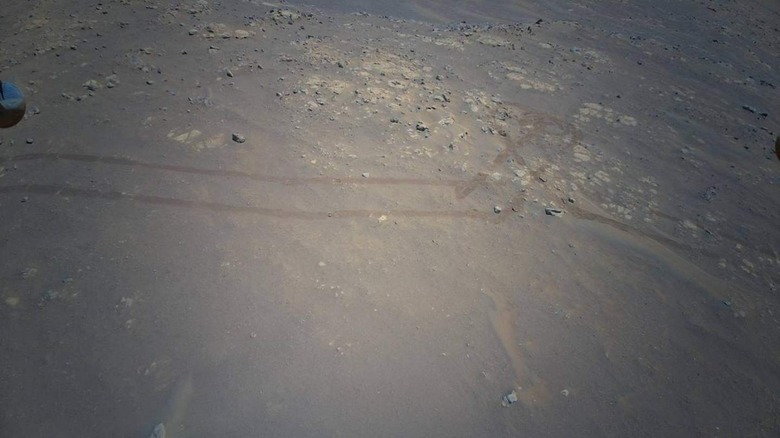NASA's Ingenuity Gears Up For Its 19th Flight - And It's A Tricky Take-Off
The plucky little helicopter exploring Mars, NASA's Ingenuity, has exceeded all expectations and has lasted longer than even the most optimistic predictions. Originally designed for up to five flights, the helicopter is now gearing up for its 19th flight, which will be its first of 2022. But this flight won't be easy, especially given the tricky take-off it will have to perform.
The 19th flight is scheduled to take place today, Friday, January 7, and it will follow a route from the helicopter's current location in the South Séítah basin, over a ridge, and up onto a plateau. This is similar to a route the helicopter has flown previously, as it is currently retracing its steps, but traveling in the opposite direction. Ingenuity is heading back toward its original deployment site where it and the Perseverance rover landed.
However, despite having traveled this route before, this flight will be difficult. According to NASA, the helicopter is currently sitting in "featureless sandy terrain." And while that's good in some ways – it makes it easier to land when there aren't any rocks to dodge – it makes it more difficult to take off. That's due to the way the helicopter's navigation system works.
How the helicopter navigates across Mars
The navigation system uses a downward-facing camera on the helicopter to image the ground below and uses these images to build up a map of the surface. The system can then direct the helicopter to avoid obstacles like large rocks.
But in this case, when the helicopter is sitting on what could be considered a blank canvas, it means the navigation system will have a hard time distinguishing any features on the ground. This caused some issues when the helicopter landed on its previous flight, and engineers are being careful to ensure it doesn't cause any more problems on the next flight.
"[T]he area is actually so devoid of rock that warnings were reported during Flight 18 landing due to insufficient features to track in the vision navigation," Martin Cacan, Ingenuity Pilot at the Jet Propulsion Laboratory, wrote in a NASA blog post. "As a result, fault protection parameters will be updated to mitigate the risk of a premature landing mid-ascent."
Engineers predict that the 19th flight will last about 100 seconds, and the helicopter will travel at around 1 meter per second. It will cover 63 meters (206ft) and hit an altitude of 10 meters (33ft), once again snapping photos as it goes.

